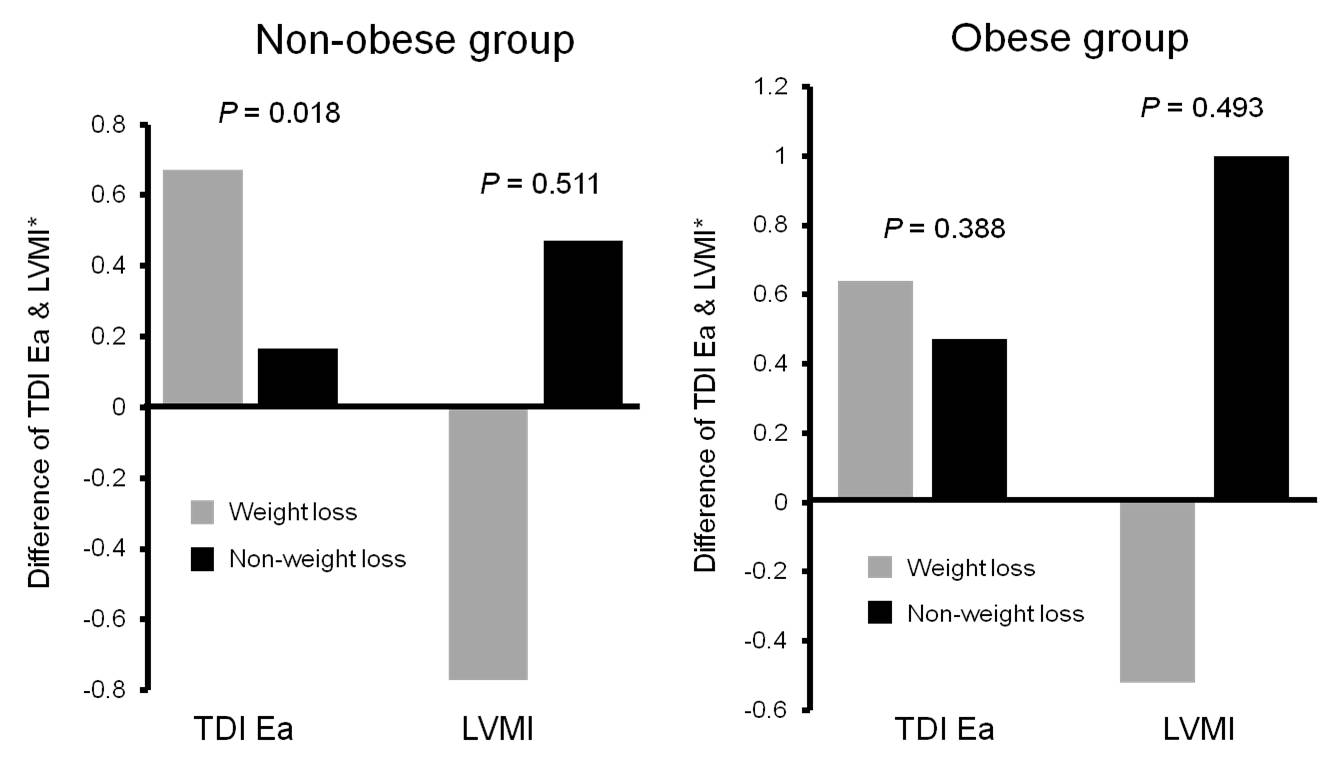| єя«•«ьљƒ : ±Єњђ
|
ЅҐЉцєш»£ - 540357 387 |
| Relation of obesity to left ventricular structure and function, and effect of weight loss in general population: The Korean Genome Epidemiology Study |
| к≥†л†§лМАнХЩкµР мХИмВ∞л≥СмЫР мИЬнЩШкЄ∞лВік≥Љ¬є , мДЬмЪЄлМАнХЩкµР лґДлЛєл≥СмЫР мИЬнЩШкЄ∞лВік≥Љ¬≤ , кµ≠лѓЉлМАнХЩкµР мЛЭнТИмШБмЦСнХЩк≥Љ¬≥ , к≥†л†§лМАнХЩкµР кµђл°Ьл≥СмЫР мИЬнЩШкЄ∞лВік≥ЉвБі , к≥†л†§лМАнХЩкµР мХИмВ∞л≥СмЫР мЬ†м†Дм≤і мЧ∞кµђмЖМ5 |
| кєАмД±нЩШ¬є, м°∞кµђмШБ¬≤, л∞±мЭЄк≤љ¬≥, мЮДмГБмЧљ¬є, кєАмЪ©нШД¬є, мЮДнЩНмЭШвБі, кєАмЭСм£Љ вБі, л∞Хм∞љкЈЬ вБі, мДЬнЩНмДЭ вБі, мЛ†м≤† 5 |
Background: Although obesity is associated with adverse left ventricular (LV) structural and functional alterations, weight loss due to lifestyle intervention could reverse these changes. The objective of this prospective 2-year follow up study was to investigate the association of weight changes with LV structural and functional alterations in general population without therapeutic strategies.
Methods: The study subjects were 643 middle-aged adults without hypertension and diabetes mellitus, drawn from an ongoing population based cohort study in Korea. Cardiovascular structure and function were performed by repeated echocardiographic examinations using conventional echocardiography and tissue Doppler imaging (TDI) at an interval of two years.
Results: At baseline, compared to non-obese group, obese group showed statistically significant increase in LV mass index and impairment in TDI Ea velocity (all P < 0.001) even after adjustment for covariates. Weight loss (-5.7 ¬± 2.1%) was seen in 91 participants, and 552 maintained or increased weight (1.4 ¬± 3.2%, P < 0.001). In non-obese participants, the weight loss group showed significant improvement in TDI Ea velocity (ќФ0.66 ¬± 0.20 vs ќФ0.17 ¬± 0.07 cm/s, P = 0.018) in a multivariate-adjusted analysis model, compared to non-weight loss group. In obese participants, however, there was no significant difference in change of LV diastolic TDI Ea velocity between the two groups. The changes in LV mass index did not show statistically significant differences between weight loss and non-weight loss groups.
Conclusions: In this large population based sample, obesity cross-sectionally demonstrates subclinical alterations in LV structure and diastolic function. The improvement of LV diastolic abnormalities is associated with weight loss irrespective of change in LV mass index in non-obese group, but such beneficial effect is not observed in obese group.
|
|
|
Warning: getimagesize(/home/virtual/circulationadmin/renewal/econgress/conference/abstract/img_files/KSH.jpg) [function.getimagesize]: failed to open stream: No such file or directory in /home/virtual/circulationadmin/new/econgress/conference/manage/schedule/view_abstract.php on line 164

|
|





